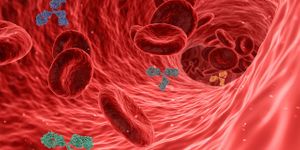How Light Therapy Could Help People With Alzheimer's Disease
Light therapy can refer to many things, though it generally describes the use of some kind of light source--whether natural or artificial--to treat certain health conditions. Some types of light therapy can help with mood disorders, such as depression or seasonal affective disorder (SAD). Researchers have also tried using light therapy, in combination with other treatments, to treat people with cancer, with some success.
According to a recent grant awarded by the National Institutes of Health (NIH) to researchers at the Icahn School of Medicine at Mount Sinai, light therapy is being studied as a possible way to combat Alzheimer’s disease as well. Alzheimers is a form of dementia that can cause progressive loss of memory and other vital cognitive functions. It’s currently ranked as the sixth leading cause of death in the U.S.
While light may seem unusual for an Alzheimer’s treatment (or any kind of treatment) light affects many aspects of our health, according to the research team at Mount Sinai. Researchers are looking specifically at whether light therapy could help people with Alzheimers struggling with many of the classic symptoms of the disease: changes in mood, being more forgetful, and becoming confused more frequently. One of the lead researchers, Dr. Mariana Figueiro, has conducted a body of research highlighting the ways light affects human health, such as researching light’s effects on fatigue and mood.
According to the NIH grant, researchers developed a device that can be worn around the eyes, like glasses, to deliver pulses of light to a person with Alzhiemers. The hypothesis is that these light bursts could change the frequency of gamma wave activity in the brain; previous research has suggested reduced gamma wave activity could play a role in the pathology of Alzheimers.
With the grant from the NIH, researchers hope to study their device with early-onset Alzheimer's patients. Researchers also plan to test the light therapy on both sleep habits (which are commonly disrupted in Alzhiemer patients) and the cognitive effects of the disease.
Sources: Eureka Alert!; NIH; Cell








